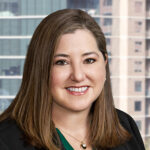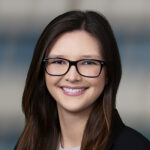In most property insurance coverage litigation, the parties engage experts to elucidate the issues in the case. This is particularly true when there are multiple causes of loss, covered and not covered, that combine to cause the damage claimed. In Texas, when two causes of loss combine to cause damage, courts apply the concurrent causation doctrine, which states:
[W]hen “excluded and covered events combine to cause” a loss and “the two causes cannot be separated,” concurrent causation exists and “the exclusion is triggered” such that the insurer has no duty to provide the requested coverage. But when a covered event and an excluded event “each independently cause” the loss, “separate and independent causation exists, “and the insurer must provide coverage despite the exclusion.” JAW The Pointe, LLC v. Lexington Ins. Co., (Tex. 2015).

Therefore, parties must determine whether the causes of loss would have separately and independently caused the damage or whether the causes are interdependent and concurrent. If it is the latter, then the loss is precluded unless the insured can meet its burden to segregate covered from uncovered damage and provide a jury with sufficient evidence to allocate the damage claimed. Wallis v. United Services Auto. Ass’n, 2 S.W.3d 300, 303 (Tex.App.—San Antonio 1999, pet. denied) (“when covered and non-covered perils combine to create a loss, the insured is entitled to recover only that portion of the damage caused solely by the covered peril(s)”). Thus, policyholders have two ways to meet their burden to obtain some recovery under the policy: (1) present competent evidence that the covered peril was the sole cause of the loss; or (2) present competent evidence allowing a fact finder to apportion and allocate the percentage of covered damage.
In the face of multiple causes of loss, policyholders and carriers often turn to experts to opine on the cause(s) of loss. For example, policyholders often rely on experts to support their argument that hail was the sole cause of roof damage that requires a complete replacement. Falling short of that, policyholders may rely on expert opinions to allocate the amount of damage to hail impacts. Carriers, likewise, might use experts to analyze whether an excluded cause of loss combined with a covered one, or to apportion damage. A core issue is whether expert opinions regarding the cause or causes of loss are reliable, and what courts should be considering in analyzing whether the opinions are helpful or merely speculative and conclusory.

When a coverage dispute is pending in federal court, an expert’s opinions are subject to Federal Rule of Evidence 702. Currently, Rule 702 permits testimony by an expert witness when the witness “is qualified as an expert by knowledge, skill, experience, training, or education” and (1) “the expert’s scientific, technical, or other specialized knowledge will help the trier of fact to understand the evidence or to determine a fact in issue;” (2) the “testimony is based on sufficient facts or data;” (3) the “testimony is the product of reliable principles and methods;” and (4) the expert “has reliably applied the principles and methods to the facts of the case.”
Pursuant to Rule 702 and related caselaw from the US Supreme Court, courts are the gatekeepers of expert testimony. Many courts have found that Rule 702 provides them with liberal power to admit expert testimony. Recently, however, Advisory Committee on Evidence Rules determined that this liberal approach often allows courts to overlook their gatekeeping function; that is, to conduct a proper analysis with respect to whether expert reports and testimony should be admitted. Accordingly, in 2017, the committee started working on an amendment to Rule 702 in order to clarify the rule’s application to forensic experts and the standard of proof required when admitting their expert opinions. That amendment takes effect on Dec. 1, 2023 and states:
A witness who is qualified as an expert by knowledge, skill, experience, training, or education may testify in the form of an opinion or otherwise if the proponent demonstrates to the court that it is more likely than not that:
(a) the expert’s scientific, technical, or other specialized knowledge will help the trier of fact to understand the evidence or to determine a fact in issue;
(b) the testimony is based on sufficient facts or data;
(c) the testimony is the product of reliable principles and methods; and
(d) the expert has reliably applied expert’s opinion reflects a reliable application of the principles and methods to the facts of the case.
The amended language and related committee notes specifically seek to clarify two points:
(1) … to clarify and emphasize that expert testimony may not be admitted unless the proponent demonstrates to the court that it is more likely than not that the proffered testimony meets the admissibility requirements set forth in the rule.See Rule 104(a). This is the preponderance of the evidence standard that applies to most of the admissibility requirements set forth in the evidence rules…[M]any courts have held that the critical questions of the sufficiency of an expert’s basis, and the application of the expert’s methodology, are questions of weight and not admissibility. These rulings are an incorrect application of Rules 702 and 104(a).
(2) … to emphasize that each expert opinion must stay within the bounds of what can be concluded from a reliable application of the expert’s basis and methodology. Judicial gatekeeping is essential because just as jurors may be unable, due to lack of specialized knowledge, to evaluate meaningfully the reliability of scientific and other methods underlying expert opinion, jurors may also lack the specialized knowledge to determine whether the conclusions of an expert go beyond what the expert’s basis and methodology may reliably support.
In other words, the new language clarifies that courts are to employ the preponderance of the evidence standard when applying subparts (a) through (d) and that an expert’s opinions themselves must demonstrate that the expert reliably applied principles or methodology to the facts underlying the expert’s opinions. This comports with the U.S. Supreme Court’s direction in Daubert that trial courts must make the preliminary determination of whether the basis of the expert’s testimony, or the expert’s methodology, is scientifically valid and properly applied to the facts in a particular case. See, e.g., Hahn v. United Fire and Casualty Company, (W.D. Tex. April 6, 2017)(citing Daubert v. Merrell Dow Pharm., Inc., (1993).
While many courts were already applying Rule 702 correctly prior to the 2023 amendment, the Committee deemed it necessary to clarify the Rule as respects the admission of expert testimony and opinions after numerous courts improperly “held that the critical questions of the sufficiency of an expert’s basis [for his testimony], and the application of the expert’s methodology, are generally questions of weight and not admissibility. These rulings are an incorrect application of Rules 702 and 104(a) and are rejected by this amendment.” Sardis v. Overhead Door Corp., (4th Cir. 2021). The amendment emphasizes threshold admissibility – not the weight to be afforded the opinion or testimony once admitted.
So what does this mean in the property insurance context? It should prompt courts to focus more intently on admissibility in terms of the sufficiency of an expert’s opinion and proffered testimony rather than on the question of “weight” given to the expert’s testimony or opinion. Rule 702 reinforces the role of courts in acting as gatekeepers by ensuring that expert scientific testimony “both rests on a reliable foundation and is relevant to the task at hand,” trial courts must make the preliminary determination of whether the basis of the expert’s testimony, or methodology, is scientifically valid and properly applied to the facts in a particular case. Hahn v. United Fire & Cas. Co., (W.D. Tex. April 6, 2017)(citing Daubert). A court must ensure “that an expert . . . employs in the courtroom the same level of intellectual rigor that characterizes the practice of an expert in the relevant field.” Kumho Tire Co., Ltd. v. Carmichael, (1999). This amendment, therefore, confirms that the analysis required by Rule 702 applies to all proposed expert testimony, including nonscientific “technical analysis” and “specialized knowledge.”
And that is where the intersection with property coverage cases comes in. A policyholder simply proffering a public adjuster’s unsupported opinion that 100% of damage was caused by a covered event should not suffice to get to a jury. Under Rule 702 as amended, a federal court should more rigorously analyze whether that opinion is reliable and test the assumptions and bases that went into it before it is admitted. The court should consider whether the expert ignored other potential causes of loss and, if so, why before allowing speculative and conclusory opinions to be presented to a jury. Similarly, if an expert such as an engineer proffers seemingly scientific opinions that are not are not reliable because of flawed methodology or testing that is not a recognized standard by peers in the industry, the opinions should not be admitted. Insurers too should ensure their own experts’ opinions will meet Rule 702’s standards and be prepared to defend against any challenges to the expert with the court.
Essentially, the amendment to Rule 702 confirms the requirements with which an expert’s report and opinions must conform.
“To satisfy the requirements under Rule 26(a)(2)(B), the expert’s report must provide the substantive rationale in detail with respect to the basis and reasons for the proffered opinions. It must explain factually why and how the witness has reached them.” United States v. St. Luke’s Episcopal Hosp., (S.D. Tex. May 20, 2008). Practically speaking, first-party coverage litigators should continue to rely on Rule 702 to challenge specious expert opinions and encourage the courts to conduct a proper analysis of threshold admissibility under the rule when moving to exclude expert reports and/or opinions that are not sufficiently reliable.
Was this article valuable?
Here are more articles you may enjoy.

 Consulting Firm McKinsey to Pay $650M to Resolve Criminal Opioid Probe
Consulting Firm McKinsey to Pay $650M to Resolve Criminal Opioid Probe  AccuWeather’s 2024 White Christmas Forecast Calls for Snow in More Areas
AccuWeather’s 2024 White Christmas Forecast Calls for Snow in More Areas  AccuWeather’s US Winter Forecast Calls for a Temperature Roller Coaster
AccuWeather’s US Winter Forecast Calls for a Temperature Roller Coaster  AI Focal Point of Cybersecurity Outlook for 2025, Says Experian
AI Focal Point of Cybersecurity Outlook for 2025, Says Experian 